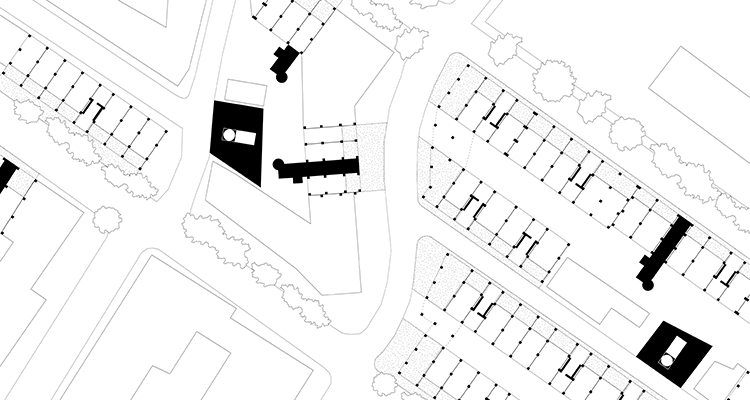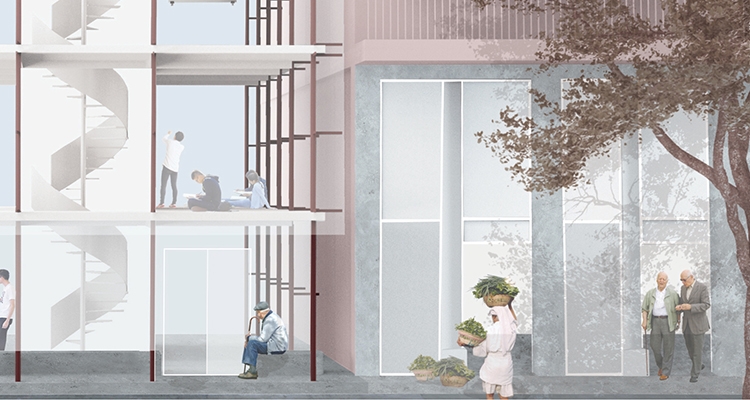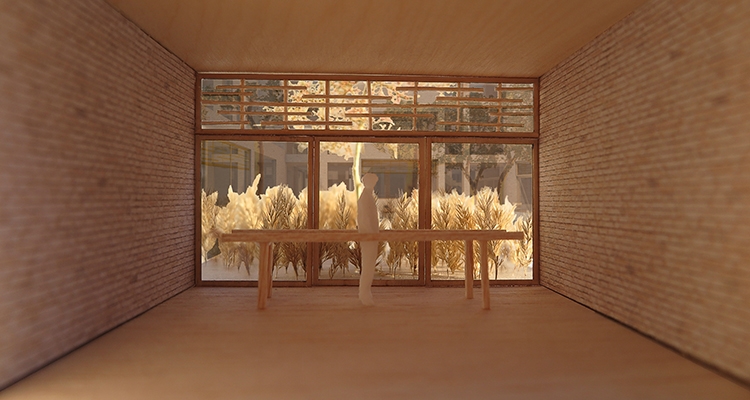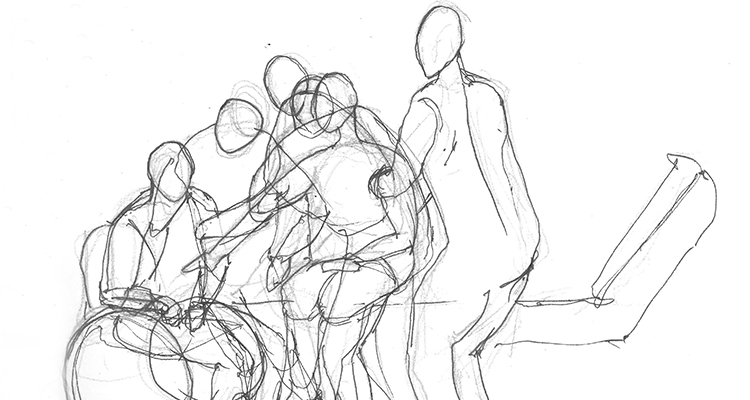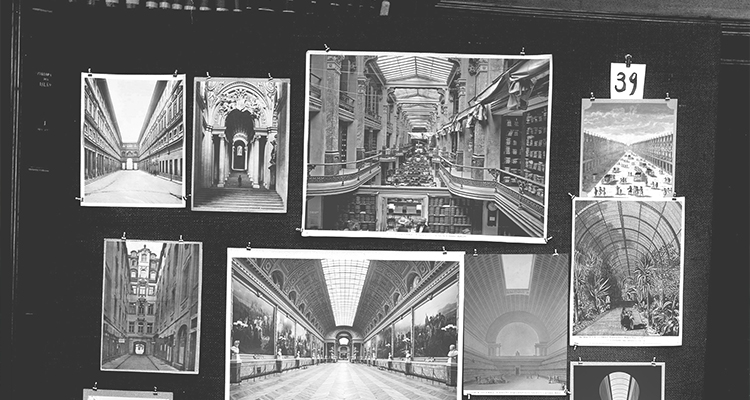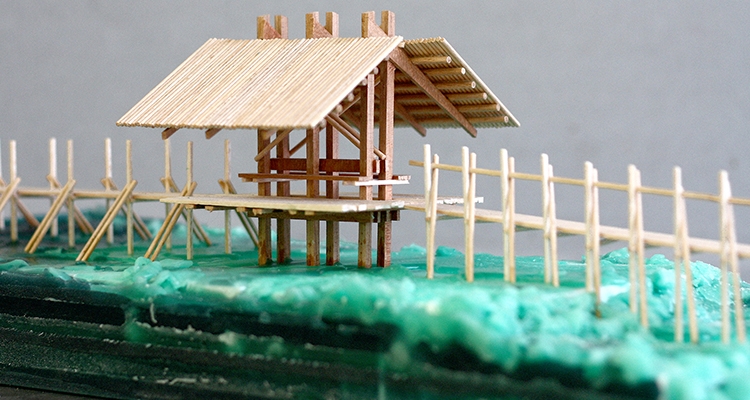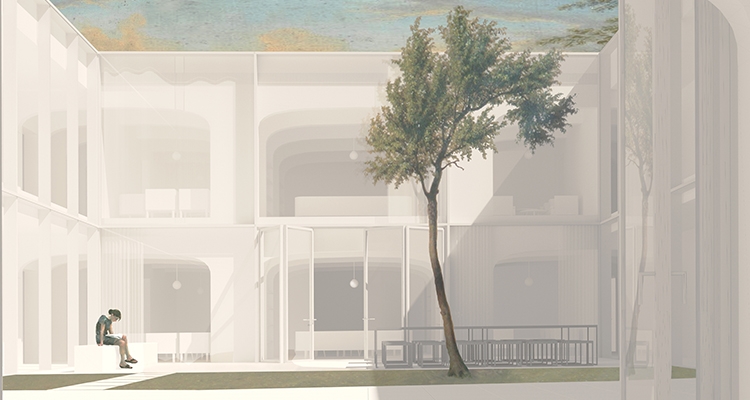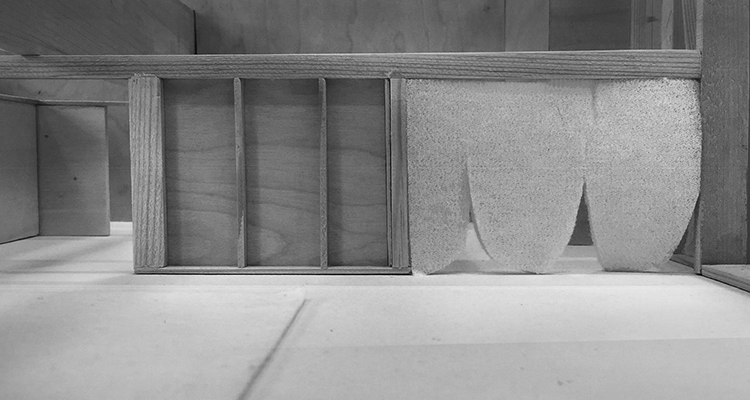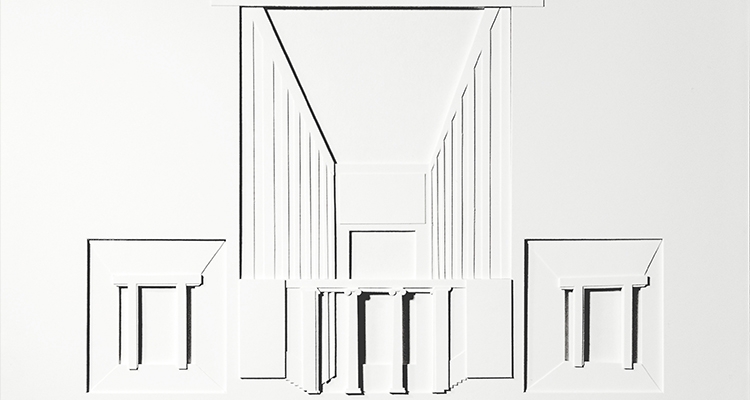While the livelihood opportunities in the refugee camps in Northern Greece are not sufficient, the city center of Thessaloniki represents a huge potential for integration, benefiting both existing citizens and newcomers. There is a large potential in the vacant buildings, the empty ground floors and the unused spaces in the city. How can this be transformed architecturally into common structures for both current and potential citizens?
Diploma project
The ambition for this project was to create a somatic rehabilitation center with a varied sequence of spaces that meet service user needs, make it easy to meet one another and accommodate a speedy recovery. All within a structure that differs from a hospital. In addition, it seeks to investigate the possibility an urban setting, that makes use of and gives back to the city.
The House for Prisoners is a small prison institution, located in Eiksmarka, Norway. It houses a very distinct type of prisoner with psychosocial disabilities. They are usually isolated in prison due to their aggressive behaviour.
«[….] I am neither on one side nor on the other, I am in the middle, I am the wall, I have two faces [surfaces] and no depth." Samuel Beckett. The Unnamable (1953).
The arcade was a project for shopping, for working, and for dwelling. In other words a project for the street. By means of the envelope - the arcade - and a glass roof construction, it folded the city inwards and turned the street into an interior. The inside into an outside.
The arcade was a project for shopping, for working, and for dwelling. In other words a project for the street. By means of the envelope - the arcade - and a glass roof construction, it folded the city inwards and turned the street into an interior. The inside into an outside.
We use signs to form a character, some are the most primitive of pictograms. They represent materials, construction or the use of space and order. With the combination of the secondary components, new characters are made.
We use signs to form a character, some are the most primitive of pictograms. They represent materials, construction or the use of space and order. With the combination of the secondary components, new characters are made.
Two programs one building.
The first program is a local need in the city dis-trict of St.Hanshaugen; a multi purpose hall. The second program is a need in the city of Oslo; a student house.
The first program is a local need in the city dis-trict of St.Hanshaugen; a multi purpose hall. The second program is a need in the city of Oslo; a student house.
Inspired by early kindergarten ideals, this proposal is based on belief in the child's inherent drive to explore the world through play. The idea is to give the child an organising framework - to encourage interaction with the surroundings, and explore the world by nurturing the playful nature of childhood itself.
What will the Deichman be? Hold the speculation! Should not we be first asking the fundamental question: What is the Deichman?
Observing is an act essential for piecing the present state into an intelligible frame of reference. However, the act of observing slides so instinctively into day-to-day life that it is easy to take for granted. Architectural sites are documented at the outset of a project, but how conscious are we of our manner and method of observation?
Observing is an act essential for piecing the present state into an intelligible frame of reference. However, the act of observing slides so instinctively into day-to-day life that it is easy to take for granted. Architectural sites are documented at the outset of a project, but how conscious are we of our manner and method of observation?
How does the human place itself in relation to the architecture so that we can reach a more complex understanding of time?
The discussion about time is solved architecturally by working separately with the movement of light and the movement of the human.
The building takes part in the always shifting light conditions, and thereby the flow of time.
The continuous glass ceiling extends the sky and takes on its movements.
The walls collect light and darkness.
The room changes mood with the sky.
The discussion about time is solved architecturally by working separately with the movement of light and the movement of the human.
The building takes part in the always shifting light conditions, and thereby the flow of time.
The continuous glass ceiling extends the sky and takes on its movements.
The walls collect light and darkness.
The room changes mood with the sky.
